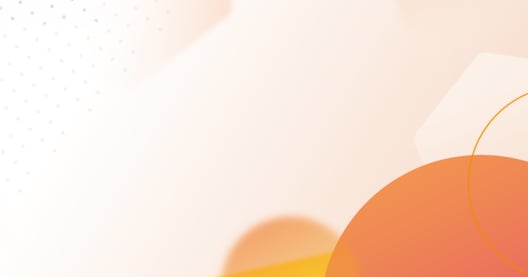
- By Natalie Gray
- ·
- Posted 26 Mar 2024
Fireside Chat #63: Optimising Developer Productivity
What is developer productivity? Is there an inevitable trade-off between speed and quality? How can organisations foster long-term productivity gains..
Hello!
The close of 2019 is a natural time for a period of reflection. This year has been one of great change and growth for Codurance, welcoming many new Craftspeople to the company and engaging with clients on groundbreaking new projects. While we are pleased to celebrate our business successes, we're equally and immensely proud that our ethos and values have continued to resonate across our flourishing teams.
In this issue of our newsletter, we are pleased to include an important message from our company founders, contemplating on the nature of our craft and our place within the community. Our talented Craftspeople have been busy hosting webinars, publishing books and writing informative blog posts for your perusal. We hope that you find these resources useful for sharing and discussing within your own teams.
We would like to take this opportunity to wish you a happy festive season and a prosperous new year ahead.
Until next time,
The Codurance team
“Making things by hand” is an innate part of how we work. It involves manipulation or shaping of a material with a type-form in our minds to achieve a certain result. There is constant sensory feedback, whether that is through touch, sight, feel or a combination of those. It is about a constant evolution of the desired outcome, in our minds, according to our changing understanding of the material and the desired outcome. It is a constant connection between the hand, the senses, and the mind. It is an act of making. We would argue that software development is an act of making and thus can be labelled as a craft. That is not a metaphor, it is a label for people who see the act of making software through this perspective.
Once we take the view that Software Craftsmanship is not a metaphor, we also break the restrictions that a metaphor imposes. The practices associated with software development do not need to be tied to other crafts throughout history. We can learn from those crafts and associated practices, adopt and adapt the ones that are relevant and ignore the ones that are not. We can come up with our own practices (e.g. Agile and XP practices) that are different because our craft is different from the others, just as other crafts are different from each other. In fact, we take that view already and we are not blindly following the archaic practices of crafts from the past. However, we are learning lessons from that history to take our craft into the future.
We understand the importance of community and inclusivity to ensure that our craft draws from the beautiful diversity that humanity offers us. We say this because we see it within the Software Craftsmanship communities that we have the pleasure to be a part of. The spirit of that same community lives in our company. We are dedicated to teaching and learning, whether that is within our community or within our clients who are invariably drawn to our community once they experience it first-hand.
Our craft is young but we like to think that we are making a difference towards its better future.
Quanta Magazine’s interview with Barbara Liskov provides a fascinating overview of the 2008 Turing Award winner’s background. Described as a pioneer of modern code writing, Liskov’s interview delves into her experiences as a woman in computer science.
Chris James’ article details the simple practices that can be implemented in order to create good delivery habits, tight feedback loops and increased agility.
Herminia Ibarra and Anne Scoular's feature explores the shift from the role of manager to that of the team coach. Containing anecdotal references, this interesting read details positive strategies that tech leads can implement from an individual, self-improvement perspective or as a catalyst for organisational and cultural change.
Sam Davies' blog post is a must for those wanting to improve their decision-making regarding software architecture. The only article that we've seen this month comparing weightlifting to development(!), this is a useful piece on the importance of understanding your customer.
Codurance Craftsperson Chris' book is a guide to useful software delivery practices and project techniques. He is offering our newsletter readers an exclusive discount, here where you can also read a large sample of the text.
Previously a Platform Architect at Pottermore, author Chris has over 25 years of experience working in software development across a wide range of industries; he wrote Development based on the practical knowledge he has acquired and used to help coach his team. Chris is a life-long learner and an Elixir mentor on Exercism.io.
Dylan Beattie’s talk presents an engaging and alternative perspective on the concept of what legacy code is and how it is not necessarily something to fear.
If you share our passion for creating well-crafted software and are ready for a chance to learn the practices required of a Software Craftsperson, the Codurance Apprenticeship is the programme for you. Join the March 2020 cohort in London or Barcelona, here.
You may remember James Birnie’s recent newsletter piece on post-quantum cryptography. He recently hosted a talk on this very subject for Code Motion, focusing on Shor’s algorithm - one for security and quantum fans alike.
Our most recent update features Cazoo Chief Architect Bob Gregory, talking about serverless architecture and the advantage of using it in your projects.
Timothée Bourguignon’s podcast is self-described as “a podcast to celebrate the diversity of profiles and journeys of our fellow software devs”. We particularly enjoyed this episode with Emily Bache, an author, international conference speaker and Technical Agile Coach.

What is developer productivity? Is there an inevitable trade-off between speed and quality? How can organisations foster long-term productivity gains..

You have reached the highest level. You have completed the learning phases and we move on to the more complex katas. Remember that in the link of..

Our recommendation is that you first go through Object-Oriented Programming katas so that you can move on to more complex testing concepts. If so, we..
Join our newsletter for expert tips and inspirational case studies
Join our newsletter for expert tips and inspirational case studies